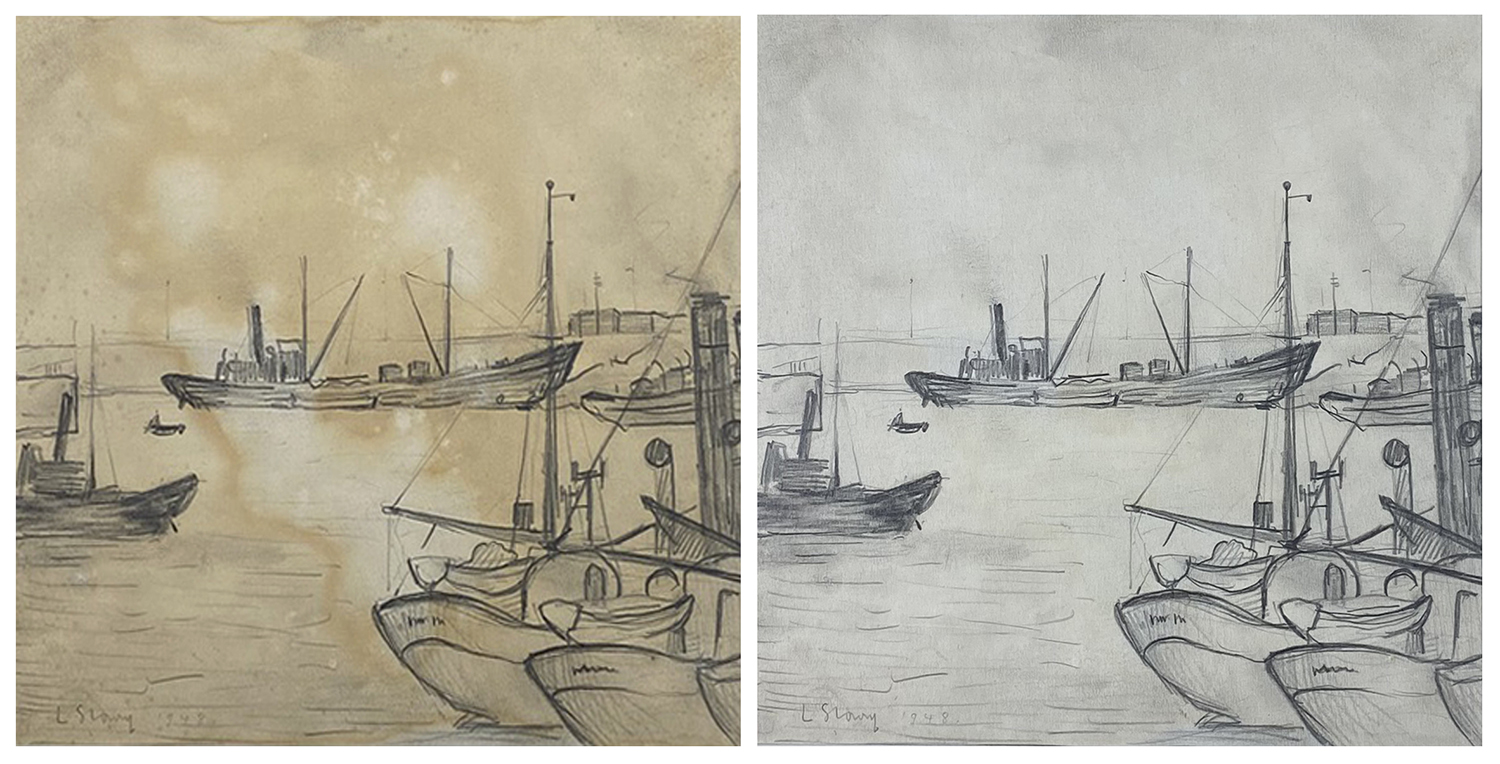In the 16th century, a massive deposit of graphite was unearthed near Grey Knotts fell in Cumbria. Just a few miles from our studio in Carlisle, the discovery was an important step in the history of art. Tools for drawing and writing were soon manufactured, making England the leading graphite pencil producer for close to 250 years.
 Above: a selection of graphite drawings from various eras
Above: a selection of graphite drawings from various eras
In this article, we will explore the history of this medium, as well as the care and restoration of pencil drawings on paper. As a historic artform, graphite and its precursor known as ‘metalpoint’ may suffer from a variety of age-related issues, as well as problems arising from less than ideal framing materials. We will explore the damage you may come across and how to treat it with professional conservation.
 Above: a detail from a pencil drawing by Wilhelm Schadow, 1800-1862
Above: a detail from a pencil drawing by Wilhelm Schadow, 1800-1862
The history of pencil drawings
Prior to the invention of the pencil, artists used rods to produce metalpoint drawings. A lead, tin or silver rod would be dragged across a surface, often prepared with a ground layer or gesso for a better result. The medium was popular with renaissance masters, such as Jan van Eyck, Albrecht Dürer, and Rembrandt who primarily used silver as it was less likely to blunt with use – these drawings are therefore referred to as silverpoint. Although silverpoint should be grey in tone, some artworks may have oxidised over time turning the lines a warm copper colour.
 Above: metalpoint drawings by Leonardo da Vinci, Lorenzo di Credi and Pier Francesco Foschi
Above: metalpoint drawings by Leonardo da Vinci, Lorenzo di Credi and Pier Francesco Foschi
Once the graphite deposit was discovered in Cumbria, metalpoint drawings became rare and finally obsolete as the invention of pencils took over. The ability to quickly sketch a scene, plan a painting or study an object with an easily transportable set of pencil and paper made art more accessible and allowed talented artists to perfect their skills to a greater level than ever before.
 Above: a selection of 18th century drawings
Above: a selection of 18th century drawings
Unlike ink, pencil sketches could be easily erased and altered – an important element for artists who had to change aspects of their plan to suit a patron’s preference. It also allowed them to re-use parchment and correct any mistakes. The softness of graphite made this possible, however it also made the material fragile. Early pencils were wrapped in string or animal skin to improve stability, the wooden casing was originally a hollowed out piece of juniper and later replaced by two wooden halves that are glued together.
 Above: two plumbago on vellum portraits by Thomas Forster, 1700
Above: two plumbago on vellum portraits by Thomas Forster, 1700
Graphite artworks from the 17th and 18th centuries are often referred to as plumbago drawings – an early name for graphite that confused it with lead ore. Composed on vellum or paper, plumbago were not always sketches for a larger piece but often artworks in their own right. Plumbago portrait miniatures can be found on snuff boxes and in some cases they were used as the original for engravings. As prints in the 18th century often chose celebrated subjects, many plumbago originals would have been of royalty and well-known public figures.
 Above: three graphite drawings by Théodore Chassériau, mid 19th century
Above: three graphite drawings by Théodore Chassériau, mid 19th century
An embargo was placed on the shipment of graphite to France during the Napoleonic wars, prompting them to come up with their own solution. In 1795, the prototype for the modern pencil was created, mixing low-quality European graphite with clay.
 Above: a 19th century pencil drawing for an event invitation
Above: a 19th century pencil drawing for an event invitation
Caring for pencil drawings
Unlike colour artworks, drawings completed only in pencil should be safe to display without fear of fading. This is only true of pure graphite pencil work, as other varieties (such as those mixed with a fixing agent) may be disturbed by UV light. If the pencil is mixed with pastel or watercolour paint, avoid direct sunlight as these elements will fade. To be safe, we recommend hanging your artwork in a fairly shaded location, even if the graphite is secure.
 Above: a 19th century pencil portrait before and after restoration
Above: a 19th century pencil portrait before and after restoration
Heavy use of pencil may be sensitive to touch, especially in areas where it appears soft and almost like charcoal. Prevent handling as much as possible to avoid smudging these fragile areas. When framing, always choose a mounted option that sets the drawing away from the glass.
Although pencil is a fairly stable medium, the paper it resides upon still has many vulnerabilities. One of the most common is foxing, a red-brown speckling that can worsen with time. Paper may also suffer from acid staining (as seen above, before and after restoration) due to poor framing materials. To ensure your pencil drawing is safe, we recommend that only low pH conservation grade materials are used during framing (our team can provide this service). To avoid moisture damage, ensure humidity is kept at around 50%.
 Above: an example of foxing on a pencil drawing
Above: an example of foxing on a pencil drawing
Pencil drawing restoration
Our ICON accredited paper conservator restores drawings after they have faced a multitude of different issues, from severe water damage to minor accidents. Using sensitive techniques, paper can be cleaned of acidic discolouration, foxing and mould. It can also be flattened and stabilised following occurrences of creasing, moisture damage and tears.
 Above: a pencil and watercolour drawing restored by our team for the Mandarin Oriental
Above: a pencil and watercolour drawing restored by our team for the Mandarin Oriental
Paper is gently floated in a customised solution, this lifts staining whilst retaining the graphite and any other medium that it may be combined with, such as watercolour paint. The results following this type of restoration are often remarkable, allowing the paper to be viewed as the artist intended.
 Above: a pencil drawing before and after restoration due to acid damage
Above: a pencil drawing before and after restoration due to acid damage
Drawings are not the only pieces that our paper conservator cares for, we have also restored many examples of pencil documents, letters, plans and graphic designs. Modern artworks may have also been completed in pencil, these can be restored with the same sensitive methods that are used to protect and preserve antique pieces. Below is an example of a Lowry drawing that was restored by our team.
How can we help?
If you have any questions about art restoration, our team is always happy to help. Email us via [email protected] or call 0207 112 7576

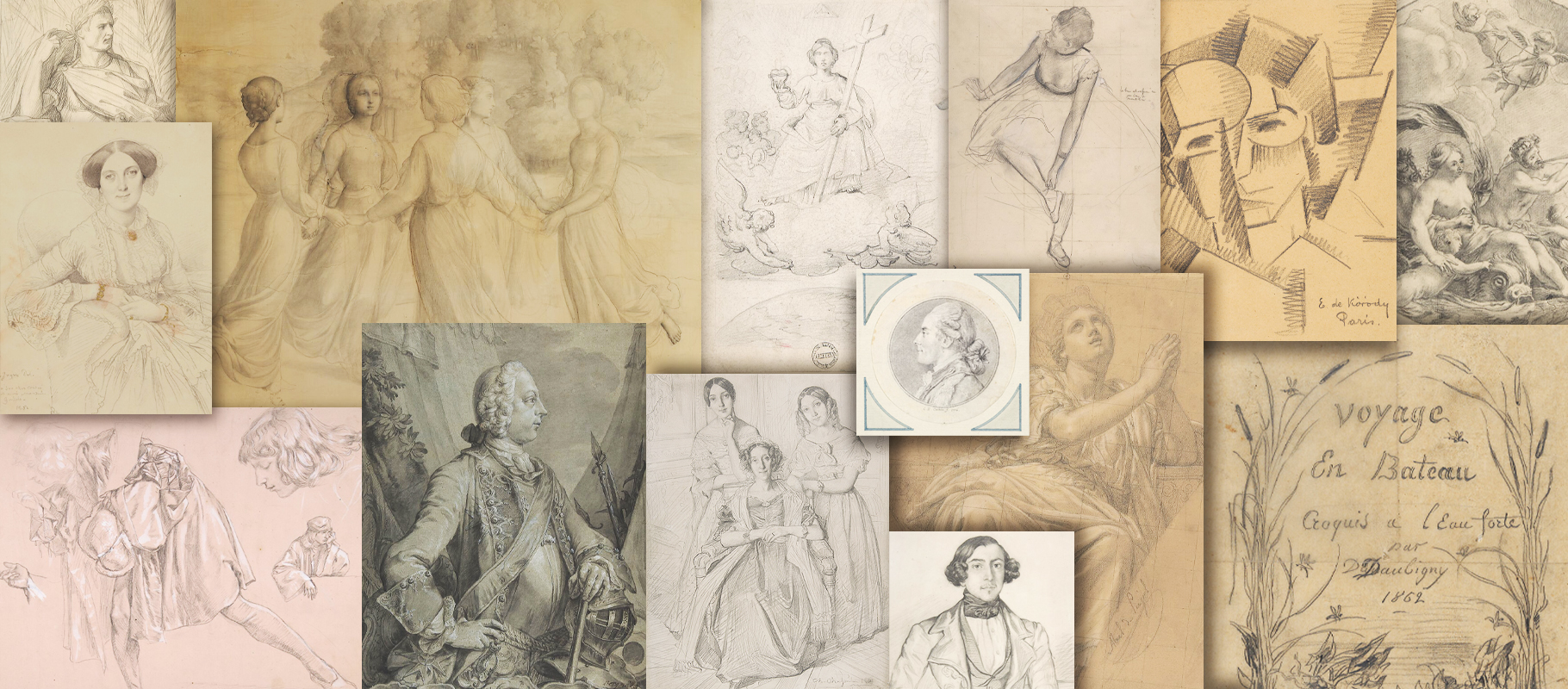 Above: a selection of graphite drawings from various eras
Above: a selection of graphite drawings from various eras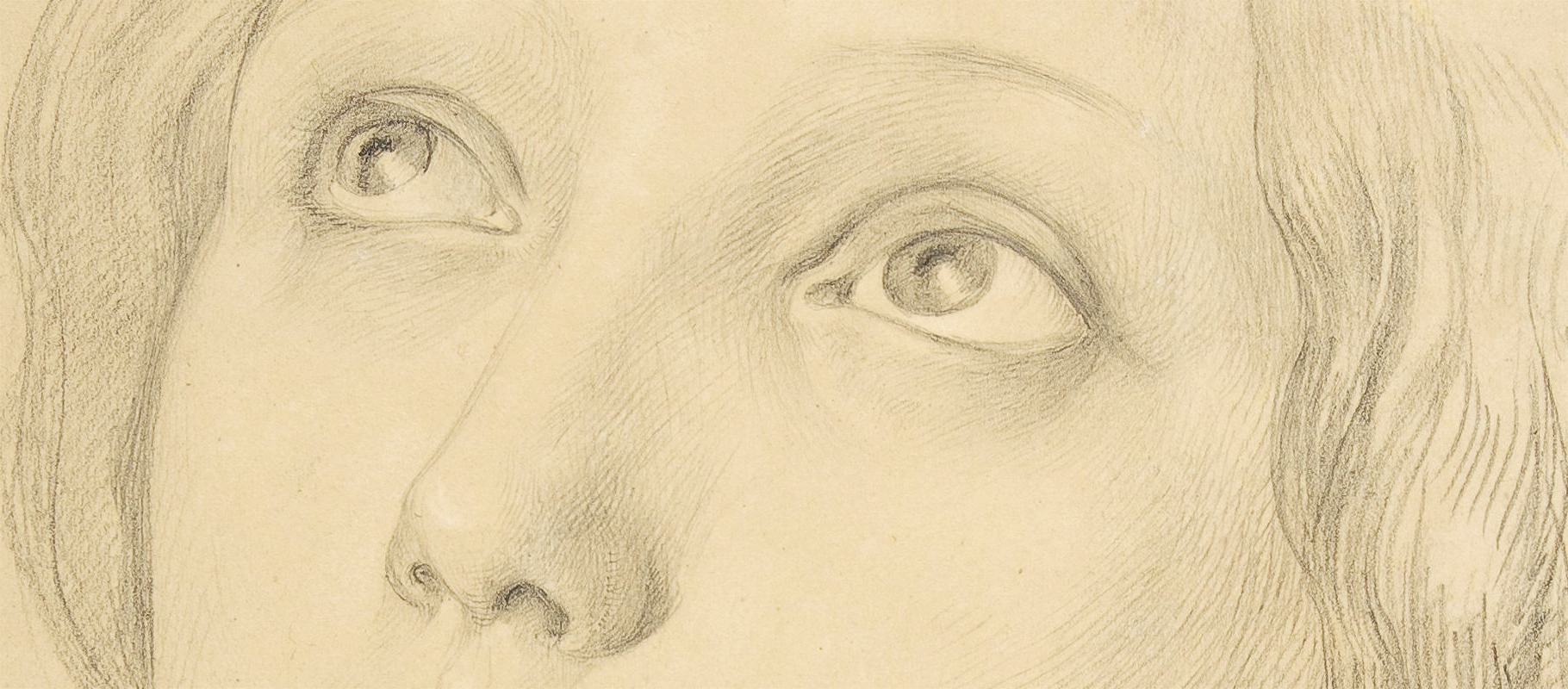 Above: a detail from a pencil drawing by Wilhelm Schadow, 1800-1862
Above: a detail from a pencil drawing by Wilhelm Schadow, 1800-1862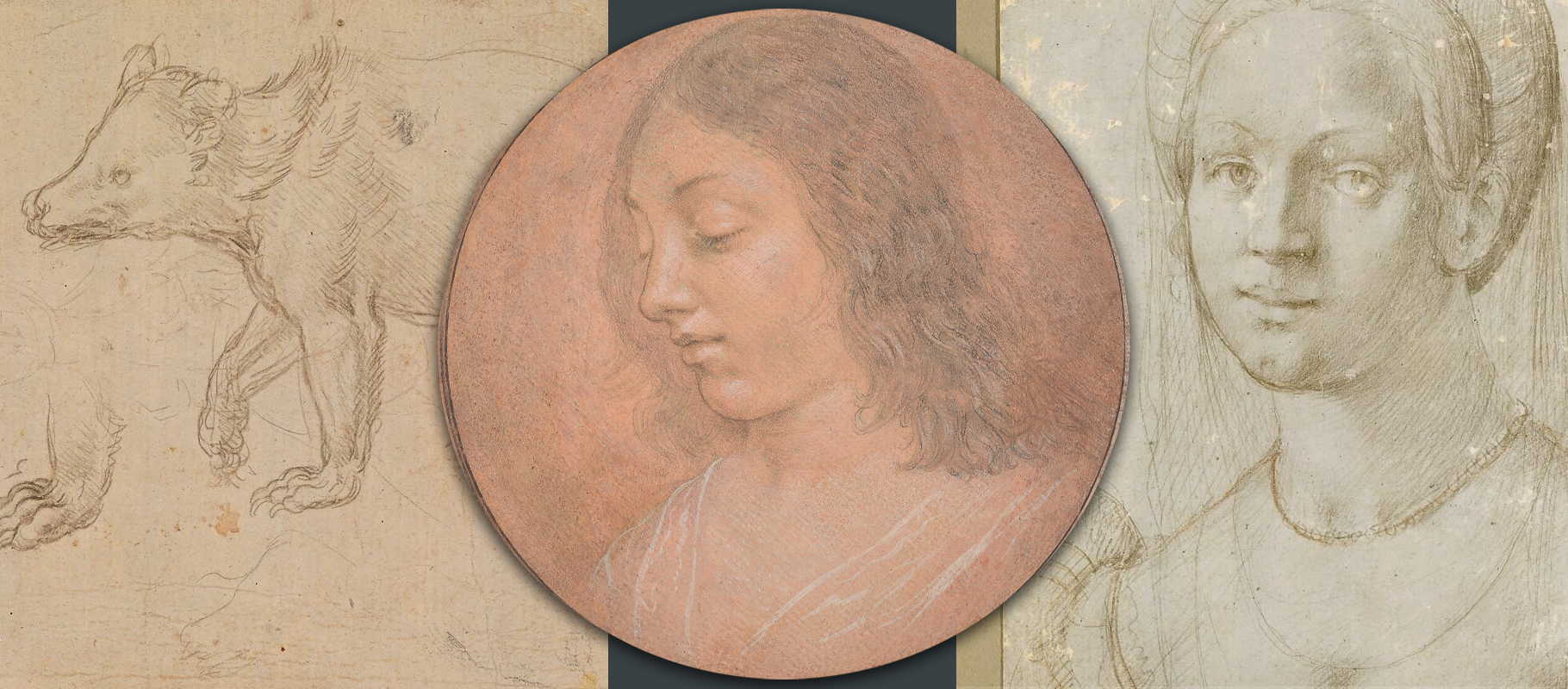 Above: metalpoint drawings by Leonardo da Vinci, Lorenzo di Credi and Pier Francesco Foschi
Above: metalpoint drawings by Leonardo da Vinci, Lorenzo di Credi and Pier Francesco Foschi  Above: a selection of 18th century drawings
Above: a selection of 18th century drawings 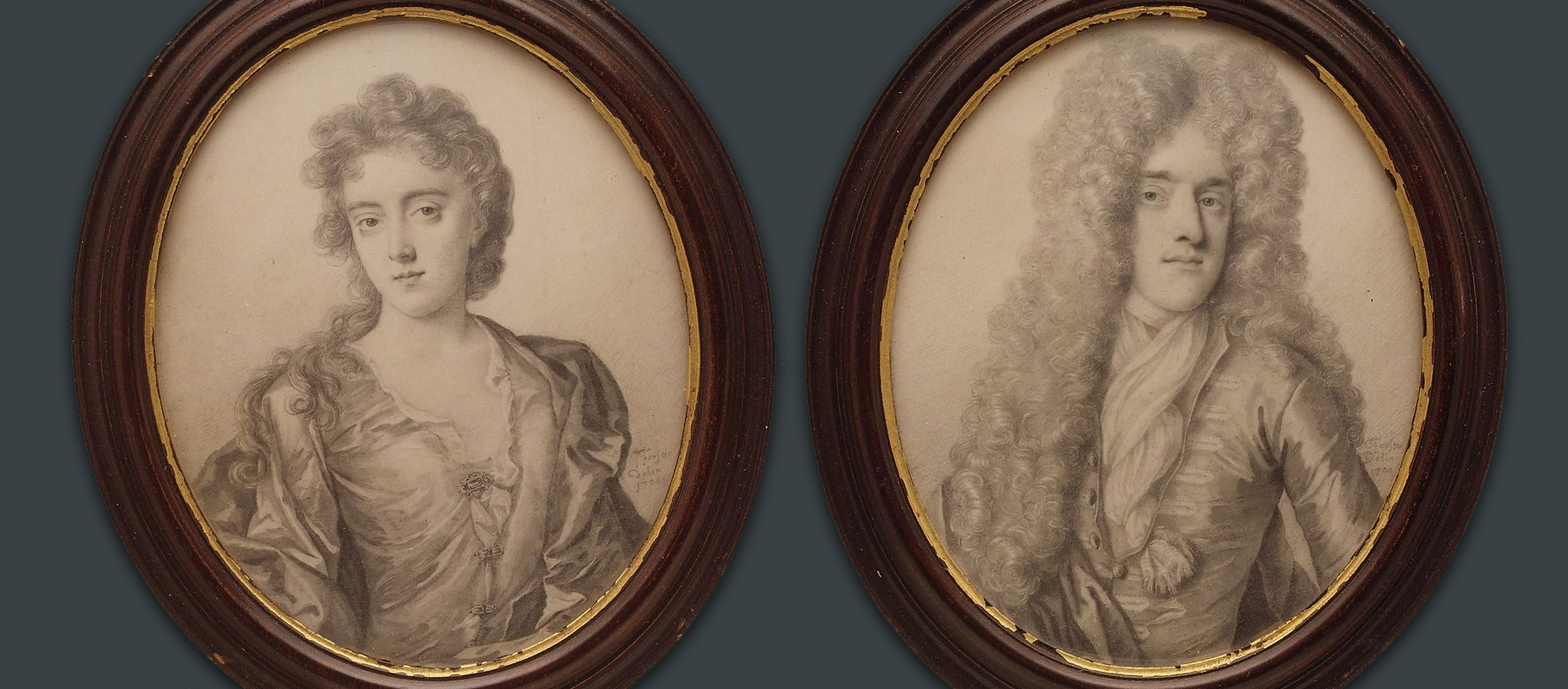 Above: two plumbago on vellum portraits by Thomas Forster, 1700
Above: two plumbago on vellum portraits by Thomas Forster, 1700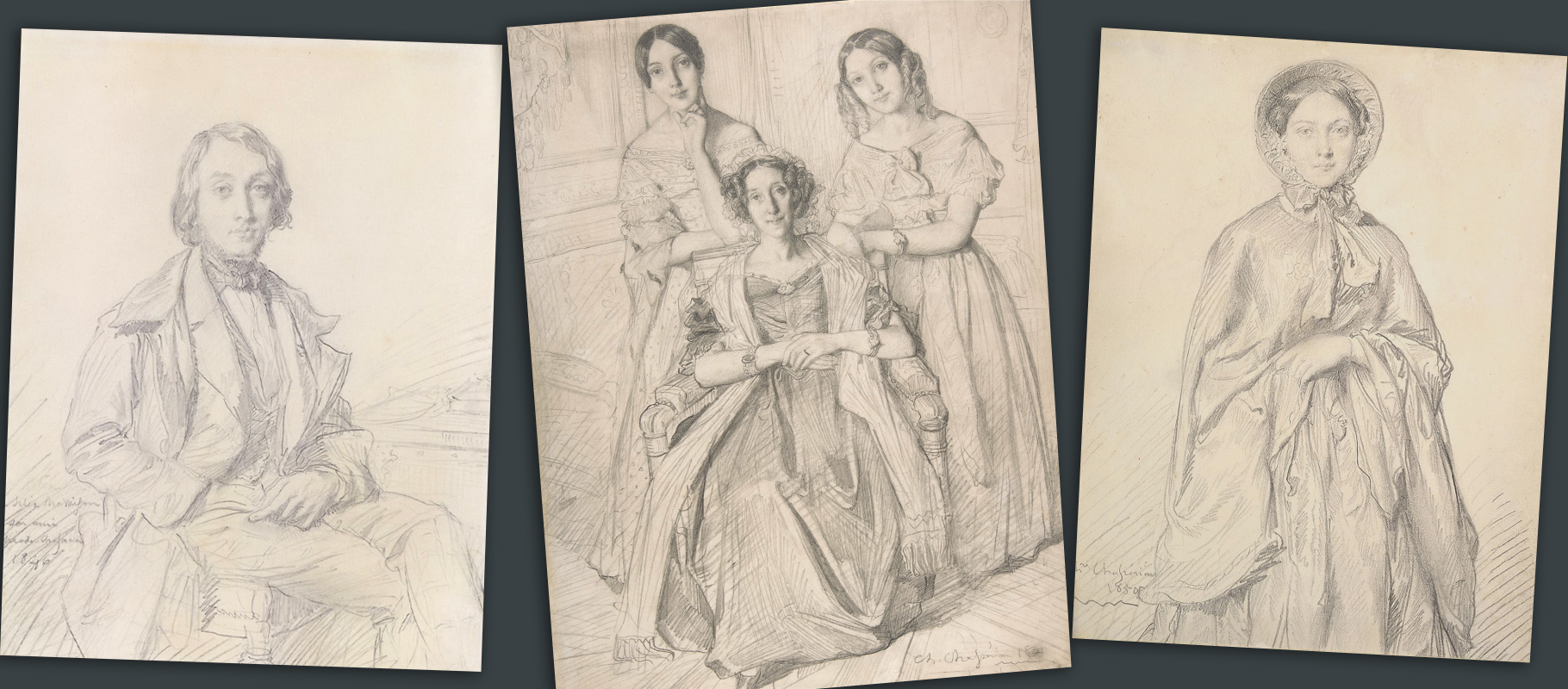 Above: three graphite drawings by Théodore Chassériau, mid 19th century
Above: three graphite drawings by Théodore Chassériau, mid 19th century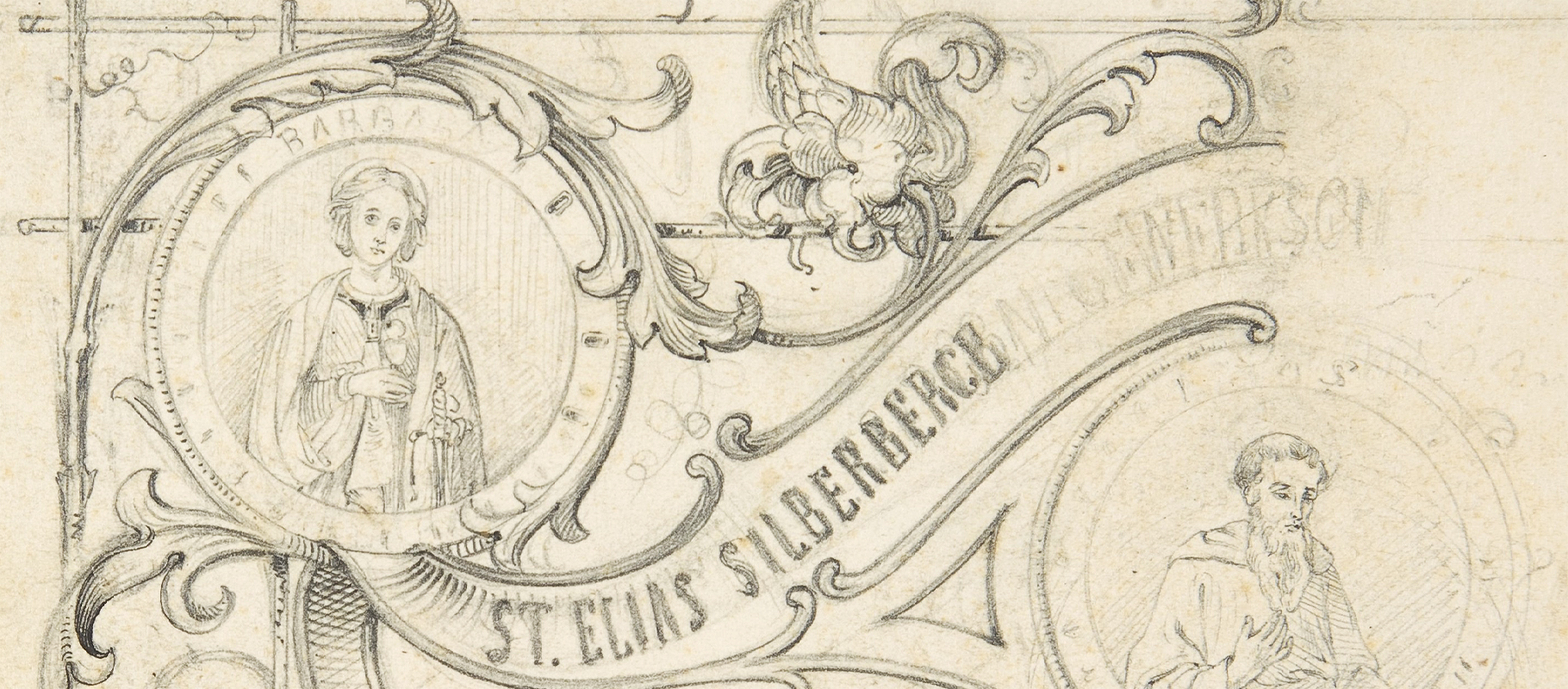 Above: a 19th century pencil drawing for an event invitation
Above: a 19th century pencil drawing for an event invitation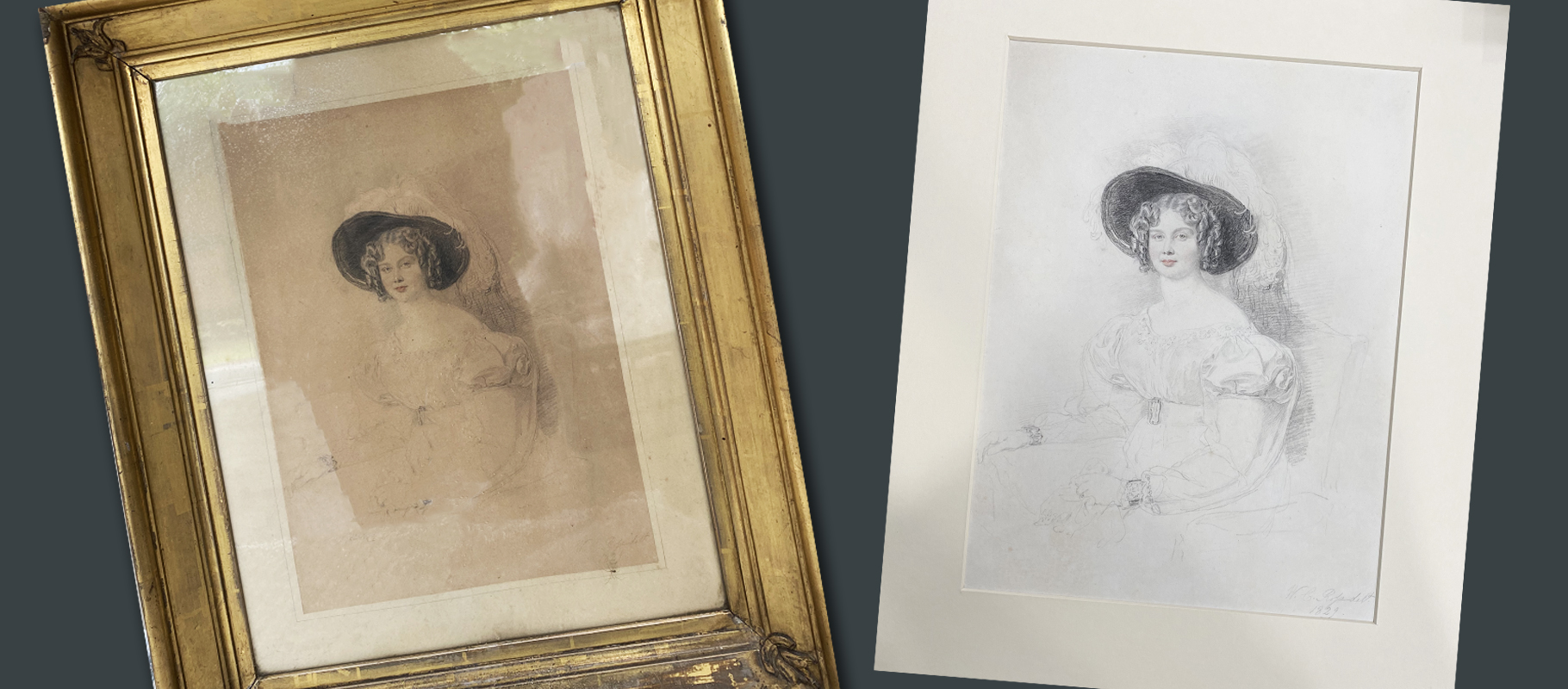 Above: a 19th century pencil portrait before and after restoration
Above: a 19th century pencil portrait before and after restoration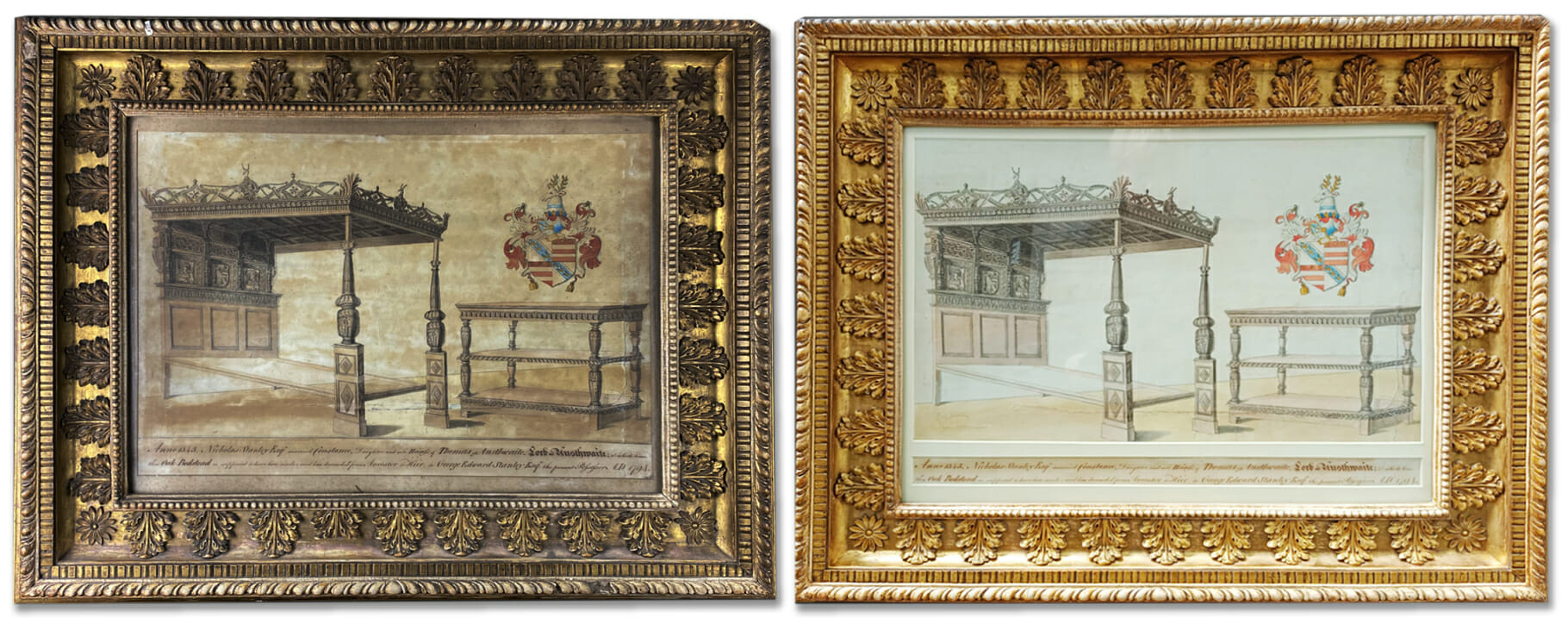
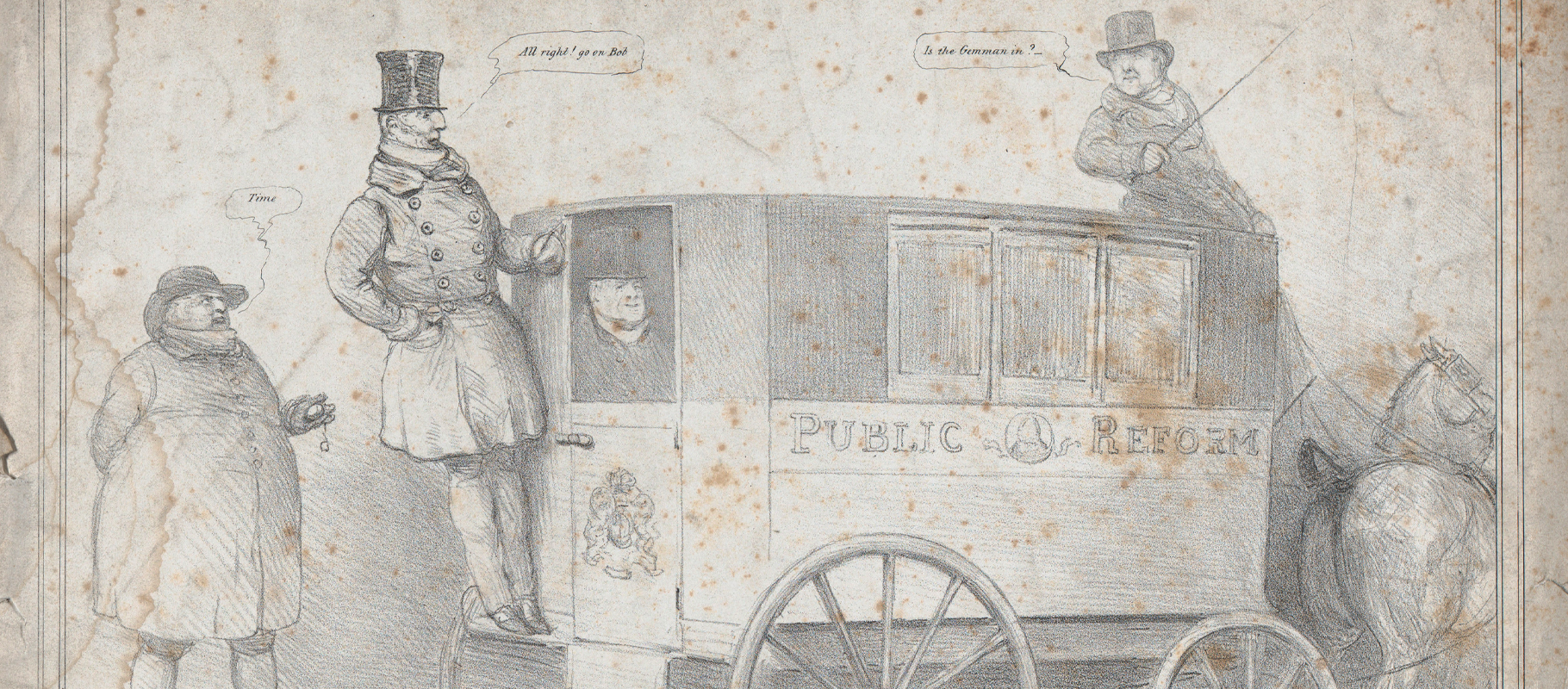 Above: an example of foxing on a pencil drawing
Above: an example of foxing on a pencil drawing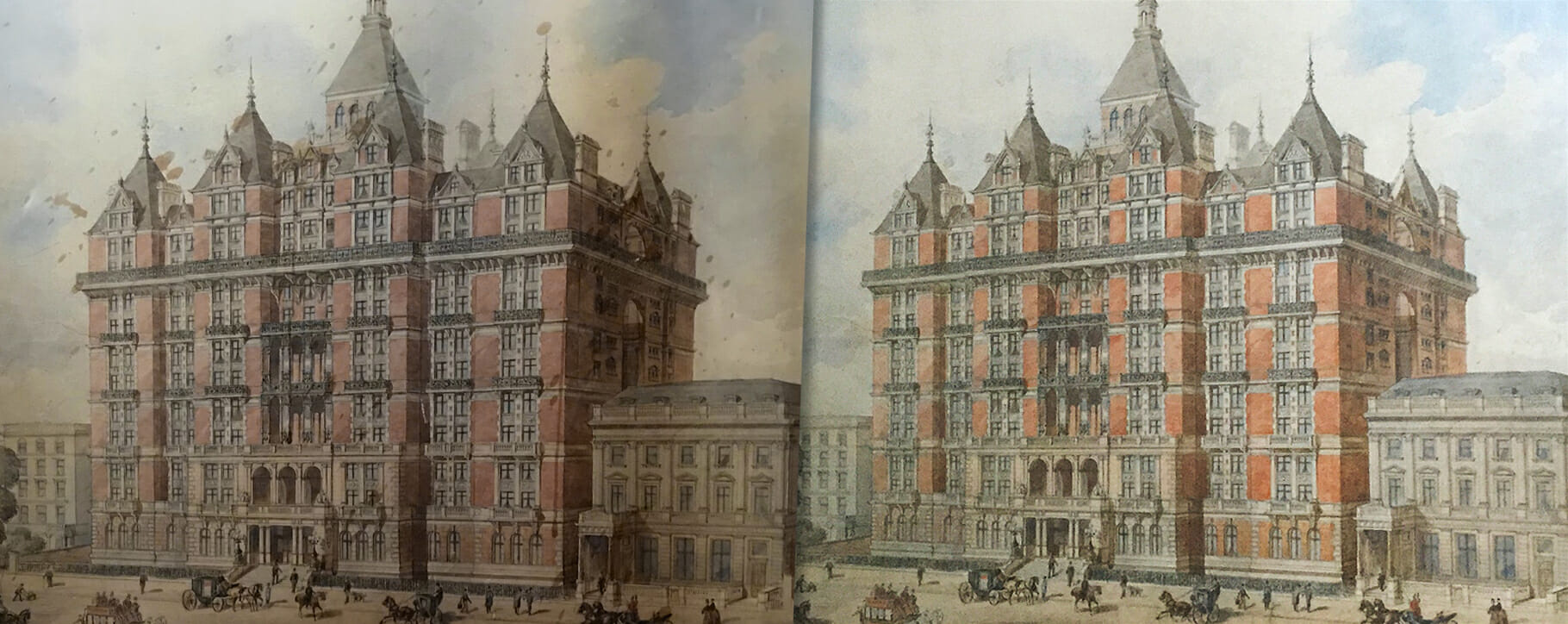 Above: a pencil and watercolour drawing restored by our team for the Mandarin Oriental
Above: a pencil and watercolour drawing restored by our team for the Mandarin Oriental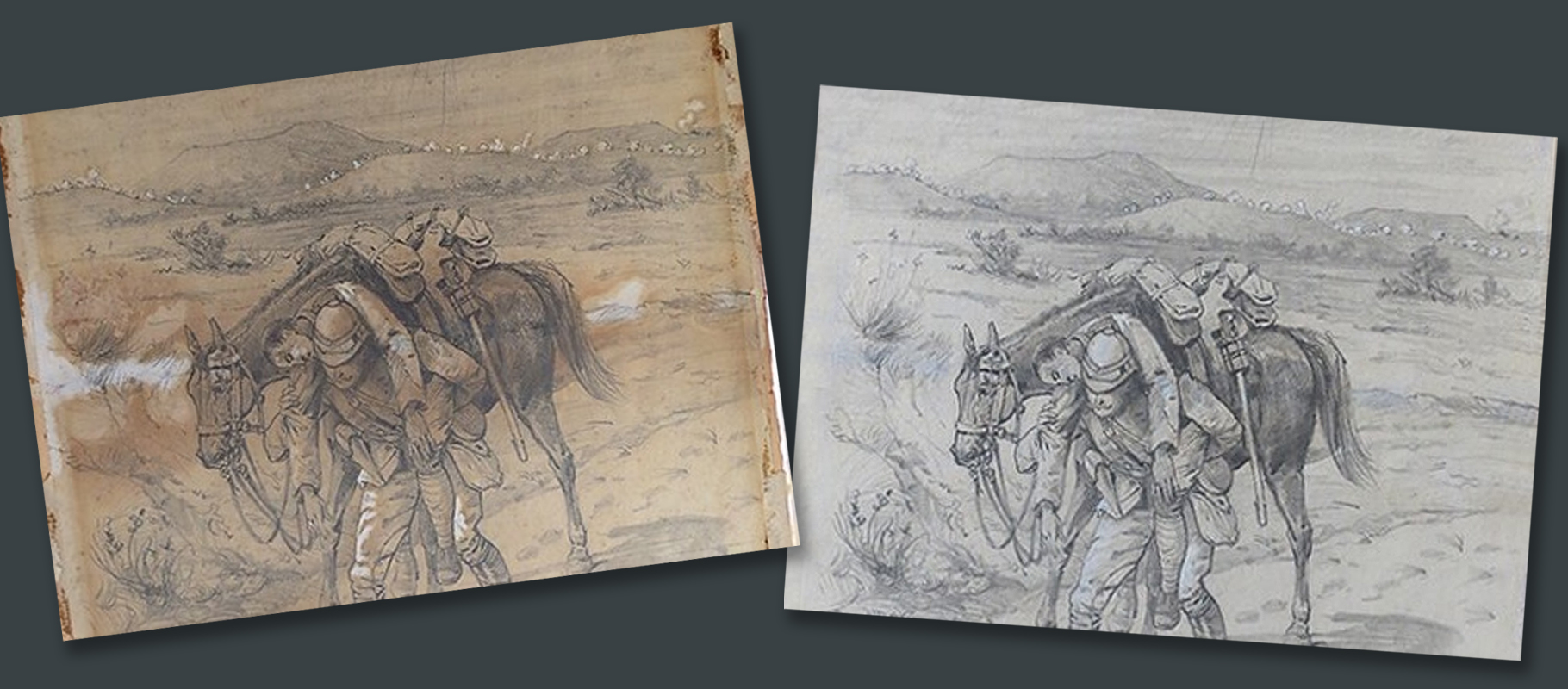 Above: a pencil drawing before and after restoration due to acid damage
Above: a pencil drawing before and after restoration due to acid damage 